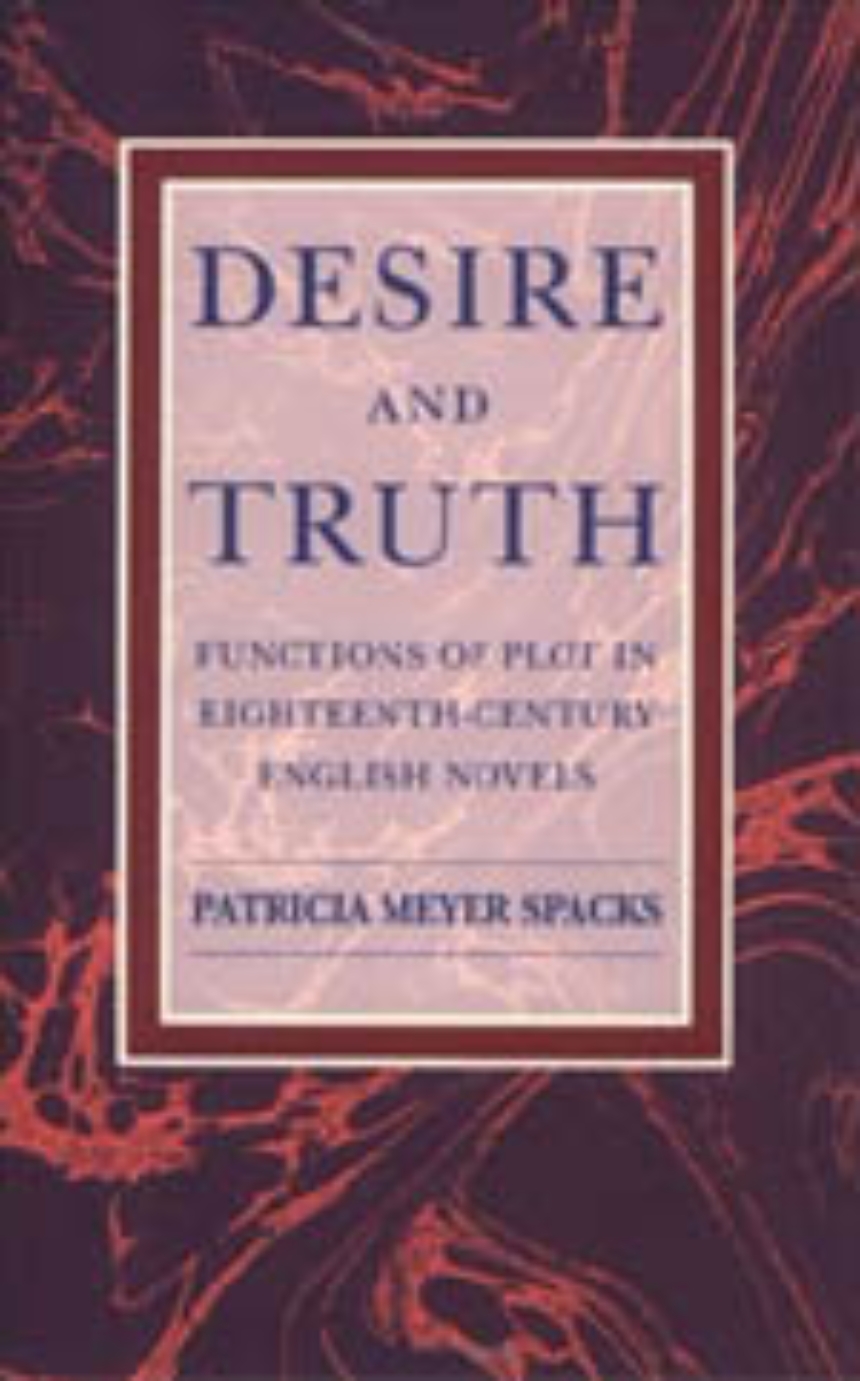Desire and Truth
Functions of Plot in Eighteenth-Century English Novels
Desire and Truth offers a major reassessment of the history of eighteenth-century fiction by showing how plot challenges or reinforces conventional categories of passion and rationality. Arguing that fiction creates and conveys its essential truths through plot, Patricia Meyer Spacks demonstrates that eighteenth-century fiction is both profoundly realistic and consistently daring.
Table of Contents
Acknowledgments
Preamble: Desire and Truth
1. Subtle Sophistries of Desire: The Female Quixote
2. Inventing Good Stories
3. Of Plots and Power: Richardson and Fielding
4. The Ideal Woman and the Plot of Power
5. The Sentimental Novel and the Challenge to Power
6. Fathers and Daughters: Ann Radcliffe
7. Energies of Mind: Novels of the 1790s
8. "The Novel’s Wisdom": Austen and Scott
Afterword
Notes
Works Cited
Index
Preamble: Desire and Truth
1. Subtle Sophistries of Desire: The Female Quixote
2. Inventing Good Stories
3. Of Plots and Power: Richardson and Fielding
4. The Ideal Woman and the Plot of Power
5. The Sentimental Novel and the Challenge to Power
6. Fathers and Daughters: Ann Radcliffe
7. Energies of Mind: Novels of the 1790s
8. "The Novel’s Wisdom": Austen and Scott
Afterword
Notes
Works Cited
Index
